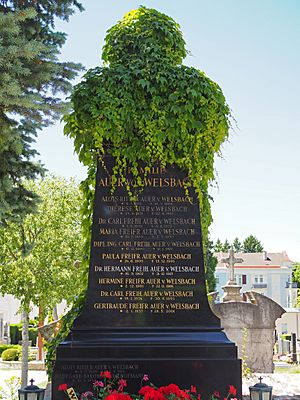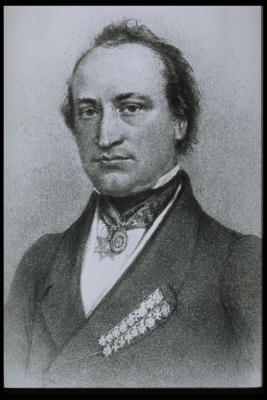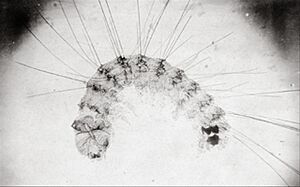Alois Auer facts for kids
Alois Auer (born May 11, 1813 – died July 10, 1869) was an amazing Austrian inventor, printer, and artist. He was very active in the 1840s and 1850s. Auer was famous for creating new ways to print. He even wrote the first book about "nature printing." He was also in charge of Austria's official state printing house. This place made beautiful science books and invented many new printing methods. Later in his life, he was given a special honor and became Alois Ritter Auer von Welsbach.
Contents
Life and Career
Early Life and Studies
Alois Auer was born in Wels, Austria. He first trained as a compositor. This means he learned how to arrange type for printing. In his free time, he studied many languages. These included French, Italian, and English. He even passed exams in these languages at the University of Vienna in 1835 and 1836.
In October 1837, Auer started working as a professor. He taught Italian at a school called a gymnasium in Linz. He became very good at other languages too. This happened during his travels in Germany, Switzerland, France, and England. His big trip started in 1839.
Leading the Imperial Printing Office
Auer studied different printing methods. He used these skills when he became the director of the printing office for the Viennese court in 1841. He brought in new, fancy typefaces. These allowed for much more flexible printing. The printing office became very successful. It could print in 500 European dialects and almost 150 world languages.
Under his leadership, the Imperial printing office became one of the biggest in Europe. He worked there until 1868.
Inventing Nature Printing
Auer wrote the first book about 'nature printing'. It was called The Discovery of the Nature Printing-Process (1853). In this book, he explained how to use real plants, rocks, and even lace. He would press them onto lead or into gum. This created a perfect copy of their natural patterns.
He saw this as a huge step forward for making books about plants. His goal was to create "artistic-scientific objects." This made it much easier to produce plant collections (herbaries) and other natural history books. Another artist, Henry Bradbury, later used a similar method.
Other Printing Innovations
Auer was interested in science, physics, and languages. He published many works, including his own books. These books covered different printing methods. They also told the long history of the Staatsdruckerei (state printing house).
Besides nature printing, he also made some of the first books that included photographs. He is even credited with the first publication of photomicrography. This is taking pictures through a microscope.
He also invented a "typometrical" system. This system made it easier to use many different foreign alphabets. It also helped with ornamental type in printing. He described this in his book Der polygraphische Apparat der Wiener k.k. Hof- und Staatsdruckerei. This means "The Polygraphical Apparatus of the Viennese Imperial–royal Court and State Printer."
During Auer's time as director, many printing advances happened. These included automatic high-speed presses and copperplate presses. He also developed new typographical processes. In 1858, Auer patented a web press in Vienna. This press could print newspapers from a continuous roll of paper. William Bullock later developed a similar press in the United States.
Auer also gave lectures on languages. Later, he became the director of Austria's state porcelain factory.
Family

Alois Auer was the father of Carl Auer von Welsbach (1858–1929). Carl was a famous Austrian scientist. He separated didymium into two new elements, neodymium and praseodymium, in 1885.
Works
Besides the books mentioned above, Alois Auer wrote other important works:
- Die Sprachenhalle oder das Vaterunser in 608 Sprachen (1844). This means "The Hall of Languages or the Our Father in 608 languages." It used Roman types.
- Das Vaterunser in 206 Sprachen (1847). This means "The Lord's Prayer in 206 languages." This book showed the prayers in their national alphabets.
See also
- Auer (surname)



